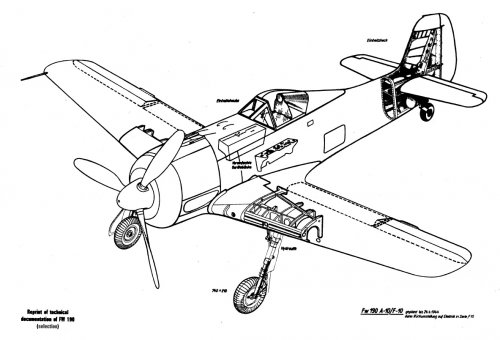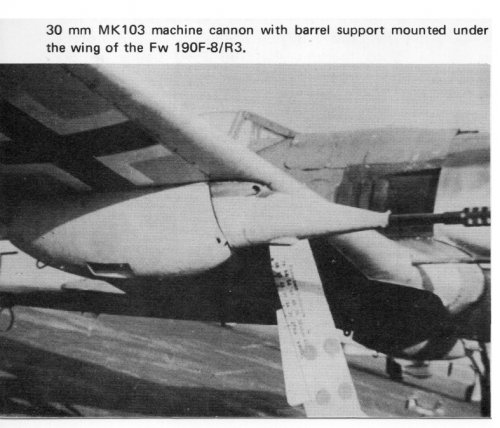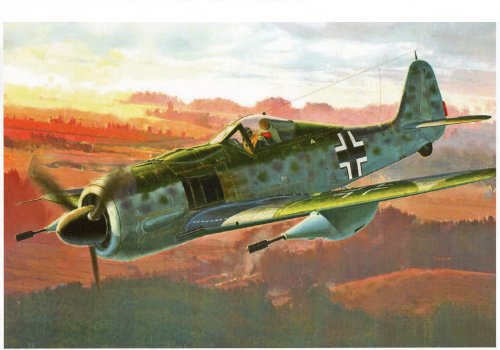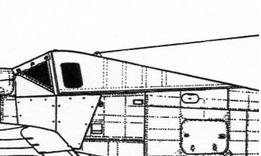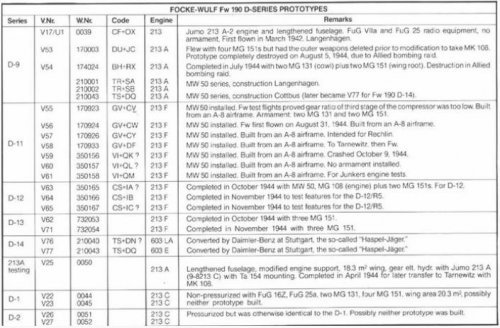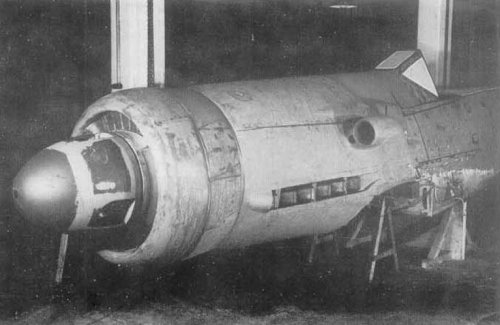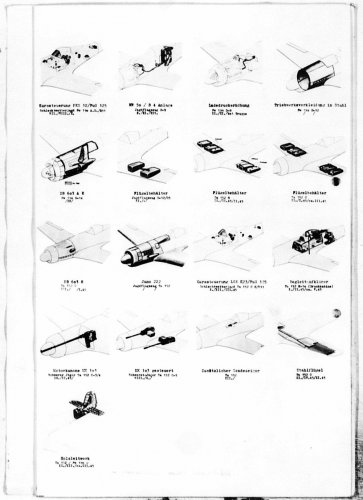When the new MK 108 cannons of 30 mm were available, it was discovered that the weapon had gone prematurely in service with the Fw 190 A-7, A-8 and A-9 without being fully tested and that its effective range was limited to 400 m. The alternative was the MK 103/30, a weapon based on antitank cannon MK 101, with 1000 m effective range, but very difficult to install on a single engine fighter because of his excessive weight and powerful recoil. In late 1943, two MK 103 cannons were experimentally installed in nacelles under the wings of the Fw 190 A-5/U11 Werk.Nr.1303 to study its possible antitank use with
Schlacht units. But it showed poor performances during the flying tests due to excessive weight and drag generated by the nacelles.
In 1944, four Fw 190 A-8 were equipped like the A-8/R3, with underwing cannons MK 103. Forward fairings were installed in nacelles to reduce drag and absorb vibrations when firing them. These aircraft only had limited usage. The MK 103 was very suitable against tanks but their excessive muzzle velocity in air-to-air combat could have a negative effect, as the light airframe of the bombers did not produce sufficient impact resistance and the 30 mm L/38 shells could get through it unexploded unless it crashed against something solid like an engine, a wing spar or a bomb.
Totaleinsatz
On April 1, 1945, the
Schlachtgeschwader SG104, operating inside Tutow airfield with airplanes Ju 87D and Fw 190 F-8, was disbanded. Its 1,200 men were ordered to participate in the defence of Berlin acting as ground troops. But a group of pilots decided to use the ten latest available aircraft on
Totaleinsatz (near-suicides) missions against bridges over the Oder River on 16 of April. They probably used the Fw 190 F-8 loaded with a bomb SC 500, although some sources indicate that they actually were Bf 109 fighters.
At that time the 3./KG200 had some Fw 190 F-8/R15 with extended tailwheel leg, capable of carrying a BT 1400 torpedo-bomb under the belly using an ETC 502 rack. It is possible that they were also used against the bridges in S.O. missions along with some
Misteln. On March 7, several aircraft of the
Nachtschlachgruppe NSG20, under the command of the major Kurt Dahlmann, made S.O. attacks against the bridge of Remagen, resulting in their destruction. They used some Fw 190 G-1 that had been specially modified with
Schloss 2000 bomb racks capable of carrying a bomb SC1800. The modification included the installation of strengthened tires and shock absorbers with increased pressure. Much standard equipment was removed, including the MG 151/20 cannons.
The modified Fw 190 G-1 needed a take-off strip of 1,200 m and could carry fuel for the one way flight only. On June 9, 1944, the KG200 was equipped with modified aircraft Fw 190 G-1 to carry a bomb SB 1000 in
Totaleinsatz missions. The project was frozen by the OKL until April 17, 1945, when some surviving pilots of the 5./KG200
Leonidas, under the command of the lt.col. Heiner Lange, carried out S.O. missions against the bridges over the Oder and Neise rivers, operating from the Jüteborg airfield.

